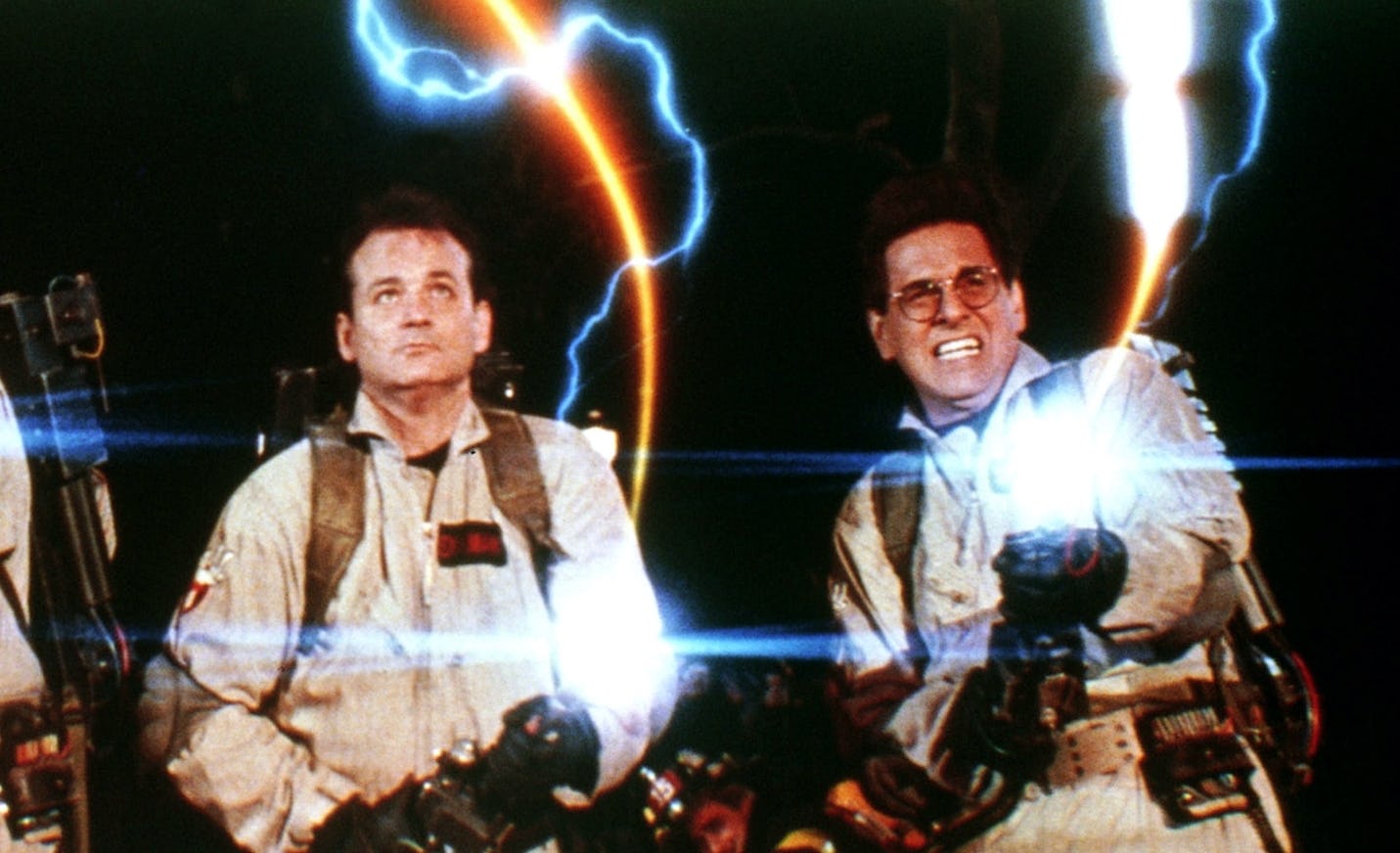
In 1984, two very different Bill Murray movies appeared in theaters. One was a slow and serious film about a man searching for meaning after facing the trauma of trench warfare. It was an adaptation of W. Somerset Maugham's 1944 novel The Razor’s Edge, and it was Murray’s first attempt to expand beyond his Saturday Night Live persona. It was a complete flop. The other movie was Ghostbusters.
While it’s unlikely that Murray expected his art-house drama to do as well as his special effects-laden comedy, the strong reactions to both were enough to drive him away from the screen for years. He ditched America and went to study philosophy in France, and when he finally returned to the big screen he seemed to have accepted his fate. His first two movies upon his return were about ghosts: The Christmas Carol-focused Scrooged in 1988, and then, in 1989, Ivan Reitman’s Ghostbusters II.
Ghostbusters II was saddled with enough baggage to fill an airplane. The first movie had become a cultural phenomenon whose size surprised everyone involved, and the pressure from Columbia executives for a sequel came quickly. While Ghostbusters had been a passion project of Dan Ackroyd’s dating back to his work with Jim Belushi, there was no planned continuation, and everyone had to be corralled into working together again.
Everyone is back: Nerdy Egon (Harold Ramis), ghost fanatic Ray (Dan Aykroyd), an under-written Winston (Ernie Hudson), and the sarcastic everyman himself, Dr. Peter Venkman (Murray). Also back are Venkman’s love interest, Dana Barrett (Sigourney Weaver), the Ghostbusters’ nerdy lawyer, Louis Tully (Rick Moranis), and even Janine (Annie Potts), their secretary.
There’s such an emphasis on the original players of Ghostbusters that there’s not much room for growth or change in the sequel. That it’s extremely similar to the first movie is the traditional knock on Ghostbusters II, and it’s not wrong. The only real addition is the evil Vigo Carpathian (played by Wilhelm von Homburg, voiced by Max von Sydow) and his evil, annoying minion Janosz (Peter MacNicol, who might give the movie’s best performance). It's a good thing the movie has one of the most charming casts imaginable, or else it would be in real trouble.

It’s a joy to watch the Ghostbusters simply do their work, like when they dig a big hole in the middle of a busy New York street and pretend to be construction workers. They’re investigating the fate of Dana’s baby stroller after it went on a self-driven journey, and they discover a river of goo beneath the streets of New York City that reacts to human emotion, growing any time someone in NYC gets angry.
“Forcing New Yorkers to be nice” was at one point the animating bit of Ghostbusters II, but the idea gets lost in the shuffle of generally watching the Ghostbusters do things. The movie’s charm lies in Venkman blowing off the Ghostbusters to go on a date with Dana, only to have them show up at their fancy restaurant covered head-to-toe in goo, too excited to even notice the world around them.
Unlike most sequels today, there’s a relaxed feeling in Ghostbusters II, like it’s just happy to be in the world again. There’s some small romance between Janine and Louis, but the movie couldn’t care less about building a larger Ghostbusters Cinematic Universe. Outside pressures loomed large on Ghostbusters II; the children’s cartoon The Real Ghostbusters was airing, and the movie needed to ensure its new audience saw everyone’s favorite ghost, Slimer. The movie allows for cameos, but it’s primarily concerned with hijinks.
Ghostbusters II also makes sure to ground its large-scale plot with shots of New York that feel very homely. This is a movie where the Statue of Liberty comes to life to battle evil as crowds of New Yorkers cheer them on. Early in the movie’s production, Aykroyd wanted to change settings, but whatever Ghostbusters II’s flaws, its location is the right one. Perhaps simply because of the level of talent involved, it couldn’t help but charm.
Ghostbusters II is streaming on HBO Max.







